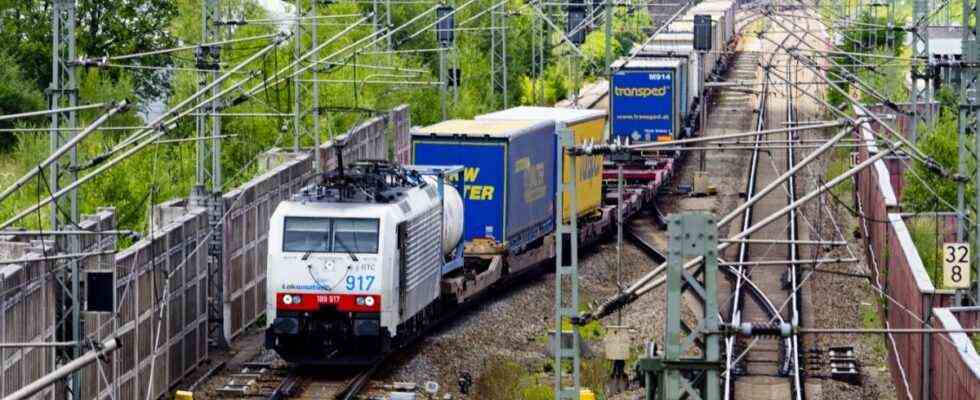We are familiar with this image from the classic western films: The sheer endless expanse of the prairie is criss-crossed by a single railroad track on which the steam locomotive makes its way through the country. Now, however, the district of Ebersberg is much more densely populated than the steppe of Arizona, which is why the joy of the railroad is rather limited here – at least if the region only serves as a through road for the same. This is supposed to be the case with the northern access to the Brenner, which, after its completion, is supposed to facilitate the crossing of the Alps and better connect Munich with Austria and northern Italy. The exact location of the route on the German side has not yet been determined, but for the faction of the CSU and FDP in the Ebersberg district council it is clear: under no circumstances should the new route simply cut through the landscape.
The two parties are now making this clear in a joint resolution that will serve as a draft resolution for the district council. In the letter sent by MP Andreas Lenz and MP Thomas Huber (both CSU), the parliamentary group criticizes the fact that it is not at all clear how much rail traffic will actually roll through the region after completion of the northern access to the Brenner. An estimate carried out by the Ministry of Transport of the volume to be expected by 2050 based on an extrapolation analogous to the estimated increase in gross domestic product does not represent a forecast, according to the resolution. “First of all, it is necessary to clearly demonstrate the necessity for the construction of a new line.” According to the plans of the railway, a new route is necessary in the section between Grafing and Großkarolinenfeld. From Grafing onwards in the direction of Munich, the freight trains are to run on the existing tracks.
In an emergency, the route should run underground
Above all, however, it is the possible new building section that worries the CSU and FDP. Should additional tracks actually be required, these would have to be laid along the existing ones. The existing road must therefore always be considered as an option in the route selection process, writes the parliamentary group. Under no circumstances should the new rails simply run straight through the landscape, because: “Sensitive and densely populated areas such as the Bavarian foothills of the Alps must not be further burdened. An above-ground route that deviates from the existing route is decided by the district council, all affected municipalities and the political representatives the region expressly rejected “, so the resolution proposed by the CSU and FDP, who propose an underground route as an emergency solution:” If the new construction along the existing route should prove to be impracticable, extensive tunneling must be carried out. “
There is criticism not only of the possible track layout, but also of the speeds at which the trains are supposed to run over them. The railway is aiming for a maximum speed of up to 230 kilometers per hour on the entire route – much too fast, say the CSU and FDP, especially because the existing rails are to be used in the area between Grafing and Munich. In the opinion of the parliamentary group, such a high speed was “not communicable”. The train should also deviate from the planned 230 kilometers per hour between Ostermünchen and Grafing.
Local public transport should not be impaired
Regardless of the route on which and how fast the trains will ultimately be traveling, adequate noise protection must be ensured in any case. In doing so, the CSU and FDP are taking up a demand that the neighboring communities along the S-Bahn route are repeatedly bringing up to the railway. “The existing line will have to carry the main load of freight and passenger traffic for decades to come. Therefore, the measures that have already been promised must be improved to the new building level,” the resolution now says. In addition, it must be ruled out that the local public transport is impaired by additional traffic.
For the CSU and FDP it is already clear that not all future traffic can be handled via the Munich hub and the route between the state capital and Rosenheim. “Relief of the existing railway line is imperative regardless of the expansion of the access route.” In order to achieve this, the parliamentary group proposes expanding the so-called eastern corridor via Hof, Regensburg, Mühldorf and Rosenheim as a “spacious relief route”. Linking this route with the Munich-Mühldorf-Freilassing railway line, which has yet to be expanded, as well as the Brenner inflow would offer considerable potential for relief. If the other parliamentary groups in the district council see it similarly, Deutsche Bahn should soon receive mail from Ebersberg – as has often happened in the course of the planning.

